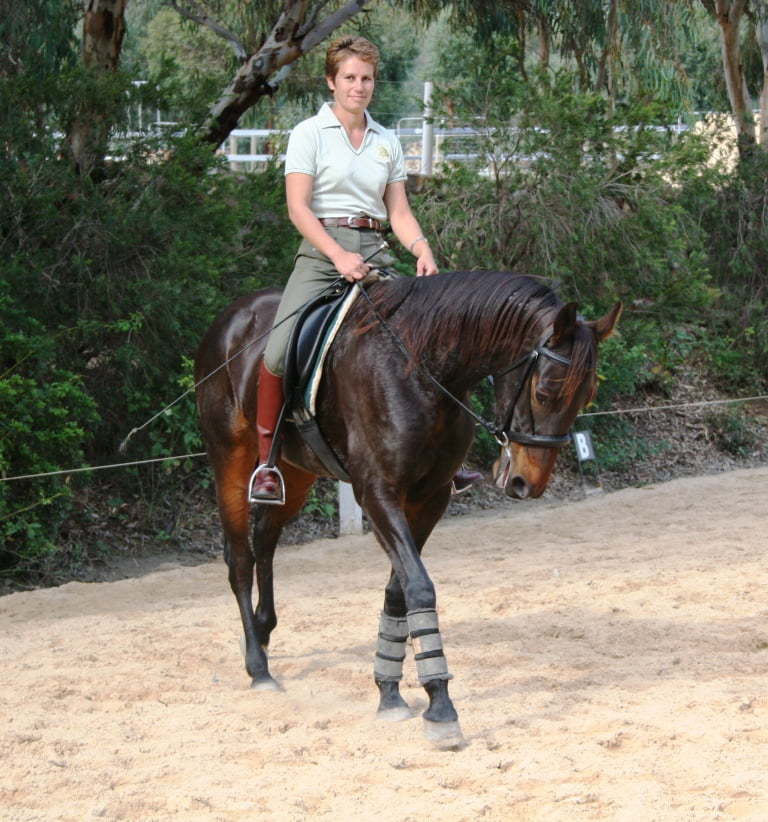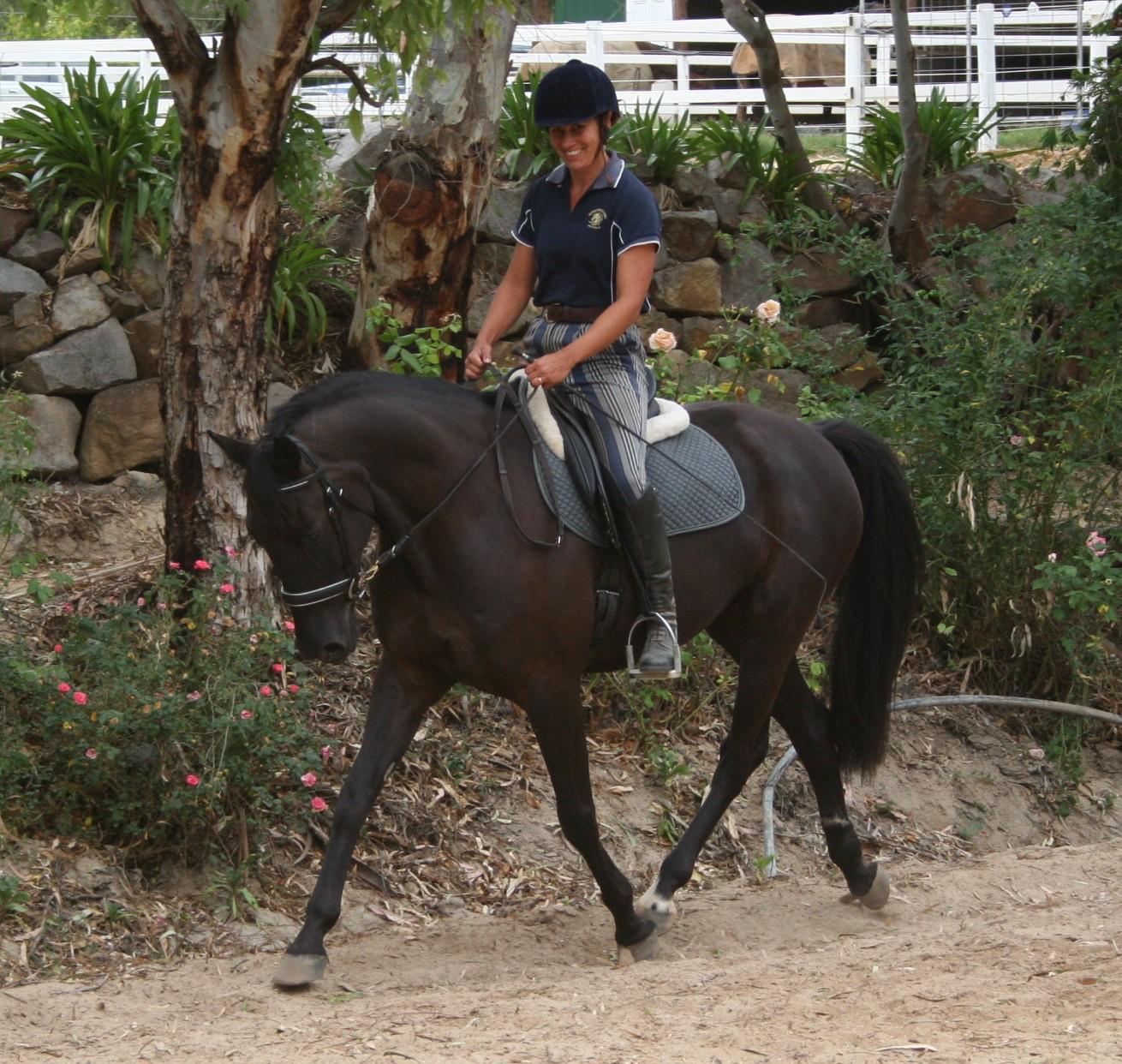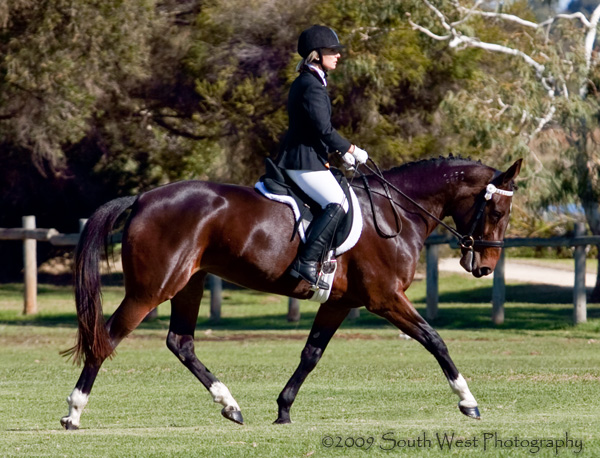PACING AND AMBLING
WHY DO THEY?
See the Video here

The wonderful Standie!
-
- They are Bred to do it.
-
- They are hobbled to do it
-
- They are built to do it
-
- They are muscle developed to do it
-
- They are tense to do it
-
- They are often belted if they do it.
PRIORITY CHECK LIST

The new career after racing
-
- There are many things that you must work through and to eliminate in order to successfully re-train the Pacer.
-
- Re-build the muscle groupings by relaxing the longitudinal muscles and strengthening the under muscles.
-
- Relax the lateral muscles
-
- re-correct the neck and top line.
-
- Attempt to lift the back and to tighten the belly
-
- Gain more engagement from the hind legs and get them beneath the horse more.
-
- Teach the horse that it is ok to canter or trot.
-
- Relax the horse by being empathetic, understanding and to guide with softness.
VETERINARY
Eliminate all Veterinary issues. Make sure there is no injuries and pain within the horse. Sore horses are tense horses and tense horses will Pace.
THE MOUTH
The first thing that I do with one of these most lovely horses, is to check out the mouth. Surprisingly, they generally have a far better mouth than the Thoroughbreds off the track but they can all be improved. You have to check the ‘Lateral Mouth’ and the ‘Front Wheel Brakes’to check the Lateral Mouth as you are going to be using this a lot.
Standard Bred Horses are often stiff laterally and you will be needing to improve this for many reasons. for one exercise that you should train and establish. Go for another exercise that you need to teach your horse. Go here for another and if you want the best re-mouthing system on the Planet.
To check out the front brakes, simply put a bridle and roller on the horse, attach two lunge reins, one to each side of the bit, pass them back through the rings of the roller, get behind the horse and prepare to long rein it, but don’t.
Stand still and wait for it to go to walk forward of it’s own accord. Set your hands in concrete and allow the horse the decision to run into the contact and for it to choose how much force that it will be wanting to apply to it’s own mouth before giving, stopping and backing off the pressure that it has established. Right there and then, you will have felt the ‘Front Wheel Brakes’ and can rate them out of 10. You will want to improve that mouth if necessary.
PSYCHOLOGY
These horses are brain washed to Pace. By their Breeding and their Training. A fair percentage would be disciplined for trotting and they are all hobbled to stop them doing it. You have to teach them that it is OK to trot without getting into trouble via the whip or through the mouth. This will form a major part of your challenge and much empathy and patience should be used.
FLEXIBILITY
These horses are often like boards and lack the flexibility training that the Dressage Horse gets. They are stiff through the back and the top line because the gait dictates this and they are stiff laterally as well You need to undertake a programme of methods to aid the horse to loosen up.
Teach it to flex on the ground to where your boot would sit and whilst you are doing this, teach it the forehand turn to prepare for leg yielding under saddle. Whilst holding the head around, put your fingers behind the girth and ask for the horse to yield the rear end over and off pressure which is applied on a scale of 0 – 10. Reward and Relief for any try.
LEG YIELDING
You should teach the horse the various Dressage moves and prepare it just like a Dressage Horse. You are going to need to ride it like a Dressage horse down the track and you will be needing some of the various aids to allow the horse to balance which will form relaxation and allow for the trot rather than pacing.
DRESSAGE TRAINING
The horse should be taught the following moves
-
- Shoulder fore
-
- Traverse
-
- Shoulder in
-
- Leg Yield
They are all here
ROUNDNESS
You should be preparing the horse to be able to go ‘on the bit’ down the track a ways and while you are at it, start stretching the top line and back muscles of the horse. Prepare it to give it’s back rather to hollow it. Go here to see what I recommend for these horses and see a photo of a Pacer on the first day. STAY AWAY FROM SIDE REINS. BEING ABOVE THE BIT CAUSES PACING DURING THE RE-EDUCATION PROCESS!
CONTACT
During all of the formative training, ride the horse on a pleasure rein. You will take up a contact down the track, only when the horse is thoroughly prepared. Months down. Then, you should ride the horse ’round’ and proper if you want to advance. You may need lessons, you may not.
LONG AND LOW
You should train the horse to relax the back when you walk around or on the trail. Train it to follow the bit down gently and lower it’s neck. Ask your Dressage Coach how to do that. The more you can free up the top line the better. At the walk, it is ok to take the contact.
Running reins on a trotter 5 minutes.
LATERAL FLEXION
This should be gained via the articles recommended above and whilst lunging with the running reins as well. Have the horse flexed slightly in the correct way of travel.
CONTACT
During the first few months, the pleasure rein should be used for the trot and canter attempts. Later, as training in all aspects start to come together, a contact may be taken up as you head towards the Dressage type training and flat work. You should get the trot established before collecting the horse up.
REWARD
Reward and relief should form a major part of your training regime. You must get them to believe that it is ok to trot and canter. Reward for small tries by voice, stroking and long rein walk. Gradually build up.
TRICKS
The utilization of trot poles in their flat work is of great use to break up their will to pace and to pick the stride of the trot in order to stop hitting them.
So too is riding on rough terrain or thick sand. Even in the shallows down a beach will see them use the trot to extract themselves from trouble.
Use the steep hills to get the canter going. Do not worry about speed. Stay off their mouth. Trust them. It doesn’t matter how fast they are going and for the first few times, that may be hell fast and not pretty. The steeper the better as they have difficulty pacing up hill.
BALANCE
Do not attempt to canter in a 20 metre wide Dressage Arena until you have things well established in so far as circles go. Use a far larger area to establish the more difficult task of cantering in a circle. You will only take away their confidence. Make sure you have the Dressage aids described above established before asking for the canter on the circle. The horse must be off your inside leg, up in the inside shoulder, bent, flexion correct and straight in the footfalls, even though you are on a circle. You cannot afford to have the hinds tracking outside of the tracks of the fronts or to the inside for that matter.
CIRCLES
Teach them at the trot. Use the walk as the reward. Establish the trot, contact, roundness and the like at the trot. Do not progress until you have things sorted out at the slower gait.
FEAR
You will find that often they will start chewing, grinding the teeth or exhibiting other nervous signs. Often they have been mis-treated, been bashed or are having a flash back to a past that they would rather forget. You must do everything in your power to convince them that you are not like that and eventually it will subside. Pacing can be brought on by fear and worry as much as anything else. You would be amazed at how complex this mental side of things can be
Many other Secrets can be found within this free e-book. Email for a Free one.
Give your horse one of these 
![]() and then one of these
and then one of these
Good Luck and never blame your horse!!



